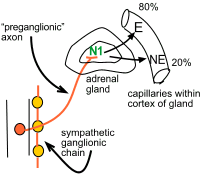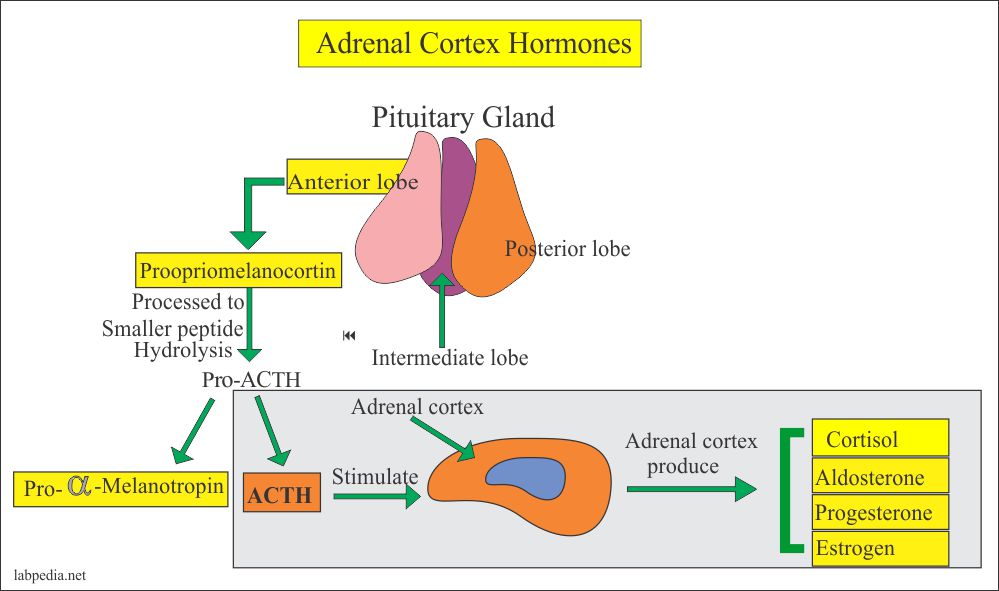

Low-density lipoprotein (LDL) accounts for about 80% of cholesterol delivered to the adrenal gland.

Plasma lipoproteins are the major source of adrenal cholesterol, though synthesis within the adrenal gland from acetate also occurs. Synthesis of cortisol and the androgens begins with cholesterol. Biosynthesis of cortisol and adrenal androgens ACTH in turn is regulated by the hypothalamus and central nervous system (CNS) via neurotransmitters and corticotropin-releasing hormone (CRH) and arginine vasopressine (AVP). Excess or a deficiency of this hormone alters the structure and function of these zones: when ACTH is deficient they degenerate when ACTH is present in excess, hyperplasia and hypertrophy of these zones occur. The zona fasciculata and the zona reticularis are regulated by ACTH ( Adreno Cortico Tropic Hormone), a hormone secreted by the pituitary gland. The inner zona reticularis surrounds the medulla and it also produces cortisol and androgens.It produces glucocorticoids (cortisol) and androgens. The zona fasciculata is the thickest layer of the adrenal cortex, making up about 75% of the cortex.The zona glomerulosa produces mineralocorticoids (aldosterone as the principal one) and cannot produce cortisol or androgens (male sex hormones).The adrenal cortex is the source of a number of steroid hormones and is arranged as 3 major layers or zones, organized as concentric shells: Epinephrine (adrenaline) and norepinephrine (noradrenaline) are produced by the medulla. The adrenal gland consists of a medulla (the center of the gland) surrounded by the cortex. AnatomyĪdrenal glands are small triangular organs located on top of the kidneys.


 0 kommentar(er)
0 kommentar(er)
